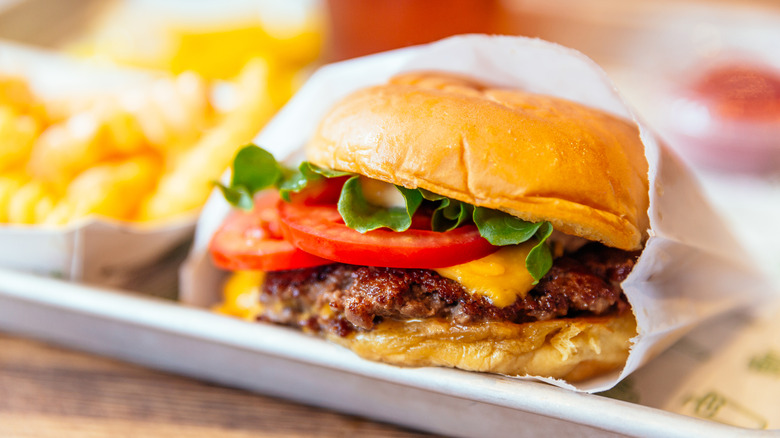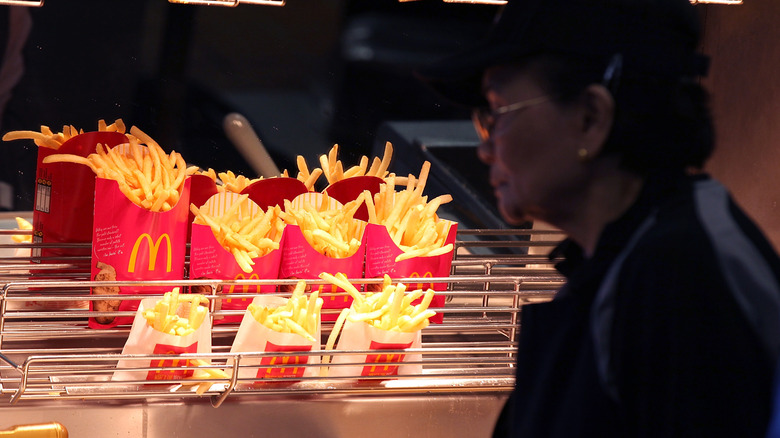How To Tell If Your Fast Food Meal Is Actually Fresh
It's so frustrating when you've had your mind set on your go-to fast food order all day just to end up disappointed — it's old-tasting, and the condiments have soaked into the bread because of how long it's been sitting. Your dry burger could have been bathing under a lamp for hours, and your fries are stale and gross. I worked at McDonald's as a teenager and can personally attest to the fact that efficiency, not freshness, reigns supreme.
We made as much food as possible at the beginning of each busy period, and we'd wait ... and wait ... and wait until we sold all that stuff that had been sitting since the breakfast rush. Even though fast food is designed to be quick and convenient, not every order is served fresh off the grill or fryer. That's probably a "duh" moment for folks who already know the tricks of the trade, but I'm going to say it louder for the people in the back.
The easiest way to tell if your fast food is fresh is to start with the temperature. A hot, steamy burger and fries are a good sign that your meal was just prepared. Freshly cooked fast food should also have a distinct texture — crisp fries, a toasted bun, and juicy meat. Freshness is also evident in the appearance of the toppings. You should have vibrant green lettuce, bright red tomatoes, and melted cheese that's still gooey.
On the flip side, if your food has been sitting, fries may feel limp, buns might be dry, soggy, or rubbery, and vegetables can look wilted or dull. If your burger looks like the cheese has hardened into some sort of protective shield fit for battle, you're in for a letdown. Trust your instincts — if it doesn't look or feel right, it probably isn't.
What to do if you get old food
Freshness often depends on how busy the restaurant is. During peak hours, food tends to be made-to-order, as high demand keeps the kitchen moving. Quieter times might mean items are made in advance and held under heat lamps, so that's definitely the worst time of day to satisfy your fast food itch at McDonald's. If you want the freshest meal possible, consider visiting during busier times when turnover is highest.
You can also pay attention to specific menu items. Specialty burgers or less popular sides might sit longer than staples like cheeseburgers or fries. Asking for customization — like no pickles or extra lettuce — can encourage the kitchen to prepare your meal fresh. And don't be afraid to politely request freshly cooked fries or sandwiches if you suspect your order might not be at its best.
Also, I've actually advised customers to order their fries with no salt. Sometimes people ask for fresh fries because they think the ones they're being given are old, and the cashier will insist that the ones they're receiving are fresh. The workaround? Ask for no salt because they have no choice but to drop a fresh batch because the fries are always salted.
Whether you're going for a classic burger, fast food chicken tenders, or an egg sandwich, dining at a quick service restaurant doesn't have to mean compromising on quality. By recognizing the signs of freshness, knowing how to work the system, and timing your visits strategically, you can enjoy a hot, satisfying meal every time.

